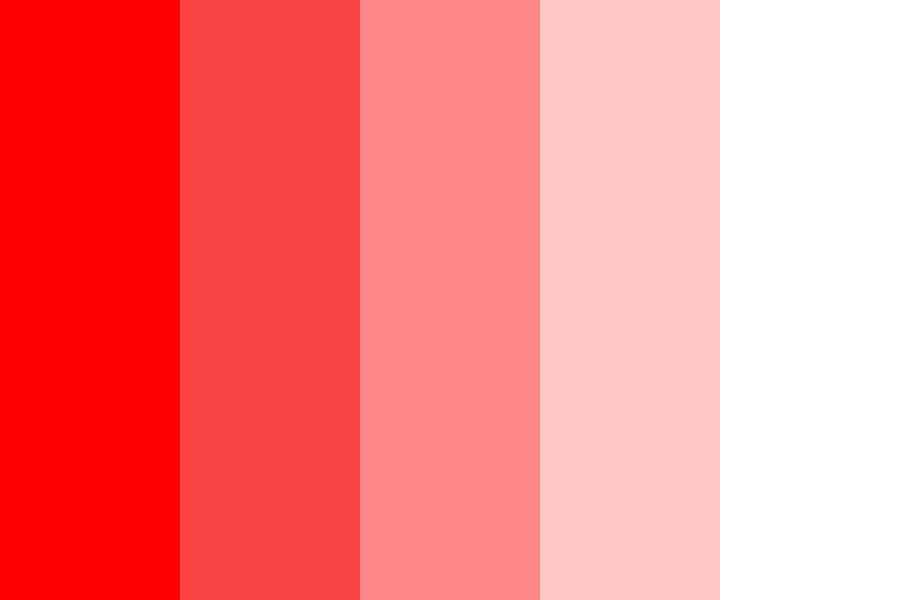Red and white are two common colors that people see every day. When mixed together, they can create the color pink. But why does combining red and white make pink? Let’s take a closer look at color theory and mixing pigments to understand the science behind red, white, and pink.
The basics of color theory
To understand how red and white make pink, we first need to review some basic color theory. The primary colors are red, yellow, and blue. When you mix primary colors together, you get secondary colors:
- Red + Yellow = Orange
- Yellow + Blue = Green
- Blue + Red = Purple
Tertiary colors are made by mixing a primary color with a secondary color next to it on the color wheel. For example:
- Red + Purple = Red-Purple
- Blue + Green = Blue-Green
- Yellow + Orange = Yellow-Orange
Pink is not considered a primary, secondary, or tertiary color. Instead, it is an extra-spectral color, meaning it exists outside the visible color spectrum. Pink is made by combining red and white pigments.
How light affects color
Colors can be created in two ways – with light and with pigments. Light contains all the colors of the rainbow. When light shines on an object, some colors are absorbed while others are reflected back to our eyes. This gives the object its color.
Pigments work differently. They contain color molecules that absorb some wavelengths of light and reflect others. For example, a red pigment absorbs all colors except red, which is reflected back. Mixing two pigments means combining their light absorption and reflection properties.
Mixing red and white pigments
Red pigment absorbs greens and blues from white light, leaving just red. White pigment reflects all light equally. When you mix red and white paints or dyes, the red still absorbs greens and blues. But now there is extra red wavelength light being reflected from the white. This makes the color lighter and pinker.
The more white pigment added, the lighter the pink becomes. With very little red pigment, you get a pale blush pink. An approximately even mix of red and white makes a medium pink. A small amount of white added to mostly red makes a vivid fuchsia pink.
Light versus pigment
With light, mixing red and white makes lighter and lighter shades of red, eventually becoming white. This is additive color mixing, where more light is added with each color.
With pigments, mixing red and white makes lighter tints of red, eventually becoming pink. This is subtractive color mixing, where pigments absorb and subtract colors from white light.
| Additive (Light) | Subtractive (Pigment) |
|---|---|
| Starts with black (no light) | Starts with white (all light) |
| Adding more light makes lighter colors | Adding more pigment makes darker colors |
| Red + White = Lighter red then white | Red + White = Darker pink |
The science of pink
The specific wavelengths of light determine a color. Longer wavelengths are redder. Shorter wavelengths are bluer. Pink is unique because it has multiple pairs of wavelengths that can produce it:
- Around 440-450 nm – A blueish pink
- Around 480-490 nm – A purplish pink
- Around 500-510 nm – A true pink
So while pink isn’t on the visible spectrum, it exists at the midpoint of medium-long wavelengths. Adding white light pushes red wavelengths into the pink zone. This demonstrates how pink is an extra-spectral color from light mixing.
With pigments, pink occurs when the red wavelengths from 600-700 nm are reflected back from a red dye, along with all the wavelengths from white. This subtractive mixing causes pink.
Other ways to make pink
While red and white make most shades of pink, there are other color combinations that produce pink as well:
- Magenta + White – Magenta lacks green wavelengths, so adding white provides a fuller pink.
- Purple + White – Purple is red + blue, so it already contains pink wavelengths.
- Red + Blue – A tiny amount of blue can “push” red into the pink zone. Rose paint adds a little blue for this reason.
- Orange + White – Orange lacks blue but has red. White provides the missing blue wavelengths to make pink.
You can also mix complementary colors like green and purple to create muted, grayish pinks. And some pink pigments are created by mineral deposits, like cobalt for rose pink.
Examples of red, white, and pink
Here are some real-world examples of red, white and pink:
| Red | White | Pink |
|---|---|---|
| Blood | Snow | Cherry blossoms |
| Ruby gemstone | Salt | Flamingo feathers |
| Stop sign | Clouds | Birthday cake |
| Tomato | Milk | Salmon fillet |
| Cardinal bird | Cotton | Azalea flowers |
Conclusion
Mixing the primary color red with white pigment produces various shades of pink. This happens because the red still absorbs greens and blues, while the added white reflects extra red wavelengths into the pink zone. Pink is a non-spectral color that exists outside the normal visible spectrum through additive light mixing or subtractive pigment mixing. So while red and white light makes lighter reds, red and white pigments take away colors to make pink.


